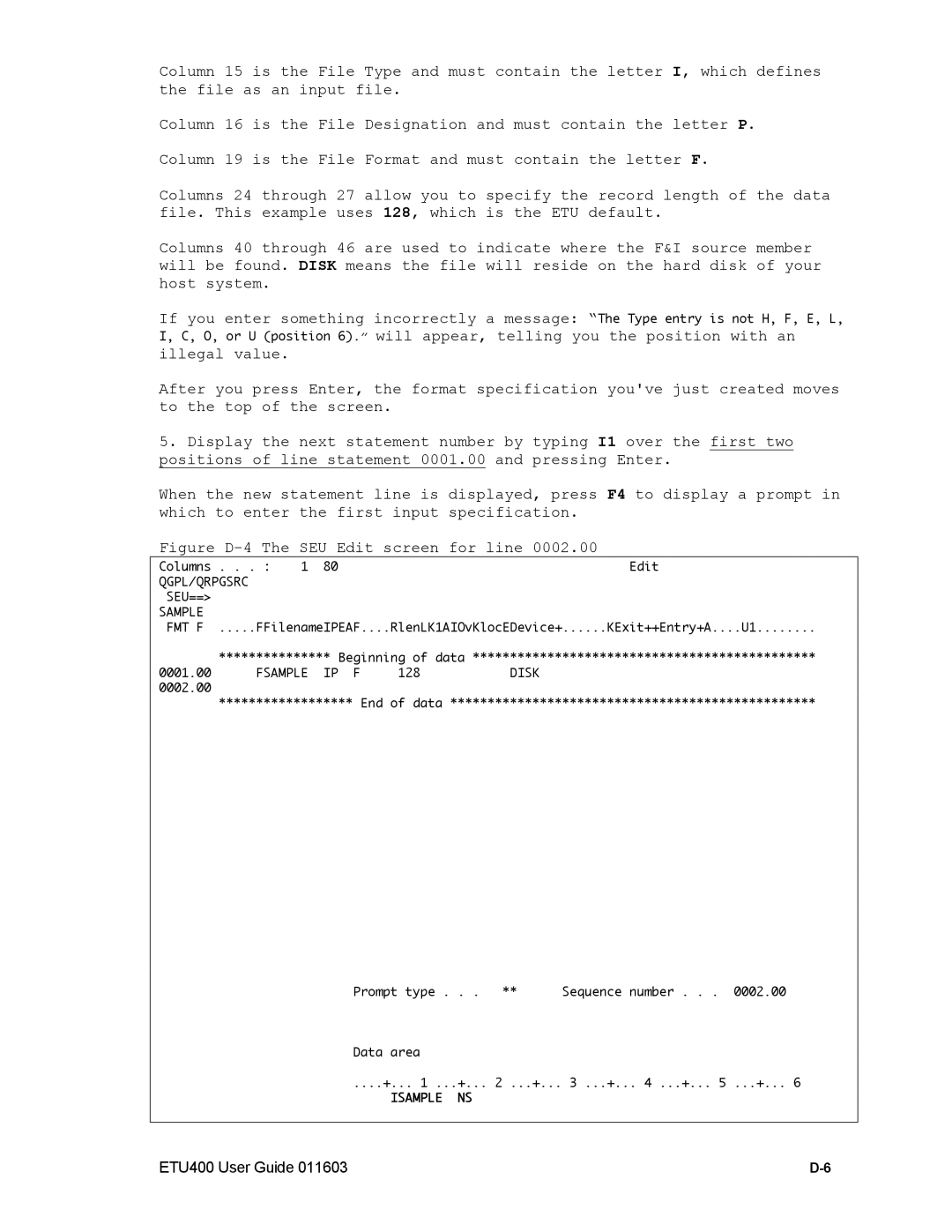
Column 15 is the File Type and must contain the letter I, which defines the file as an input file.
Column 16 is the File Designation and must contain the letter P.
Column 19 is the File Format and must contain the letter F.
Columns 24 through 27 allow you to specify the record length of the data file. This example uses 128, which is the ETU default.
Columns 40 through 46 are used to indicate where the F&I source member will be found. DISK means the file will reside on the hard disk of your host system.
If you enter something incorrectly a message: “The Type entry is not H, F, E, L, I, C, O, or U (position 6).” will appear, telling you the position with an illegal value.
After you press Enter, the format specification you've just created moves to the top of the screen.
5.Display the next statement number by typing I1 over the first two positions of line statement 0001.00 and pressing Enter.
When the new statement line is displayed, press F4 to display a prompt in which to enter the first input specification.
Figure D-4 The SEU Edit screen for line 0002.00
Columns | . . . : | 1 | 80 |
| Edit |
QGPL/QRPGSRC |
|
|
|
| |
SEU==> |
|
|
|
|
|
SAMPLE |
|
|
|
|
|
FMT F | .....FFilenameIPEAF....RlenLK1AIOvKlocEDevice+......KExit++Entry+A....U1 | ||||
| *************** Beginning of data ********************************************** | ||||
0001.00 | FSAMPLE | IP F | 128 | DISK | |
0002.00 |
|
|
|
|
|
****************** End of data *************************************************
Prompt type . | . . |
| ** | Sequence number | . . . |
| 0002.00 |
| |||
Data area |
|
|
|
|
|
|
|
|
|
| |
....+ | ... 1 ... | +... | 2 | ...+... | 3 ... | +... | 4 ... | +... | 5 | ...+... | 6 |
| ISAMPLE | NS |
|
|
|
|
|
|
|
|
|
ETU400 User Guide 011603 |
